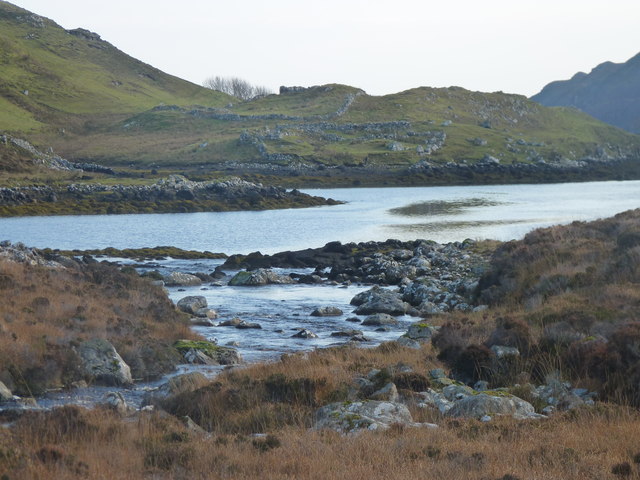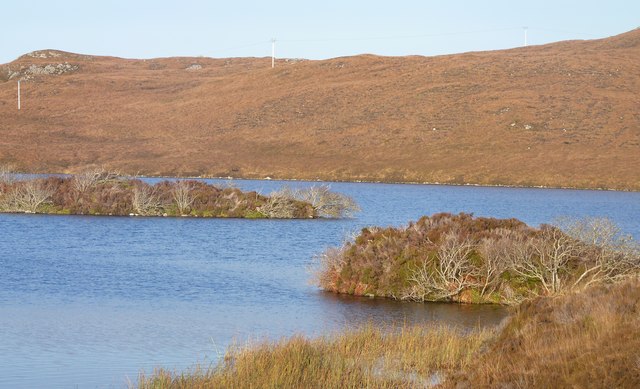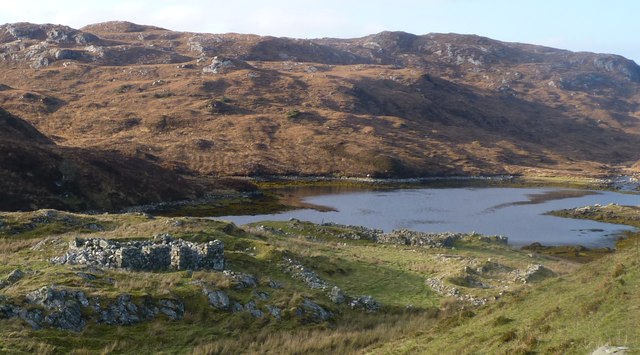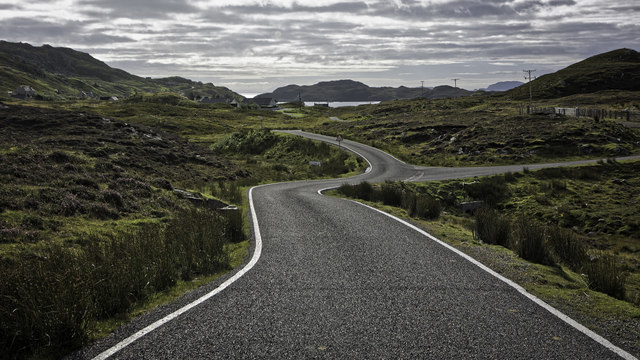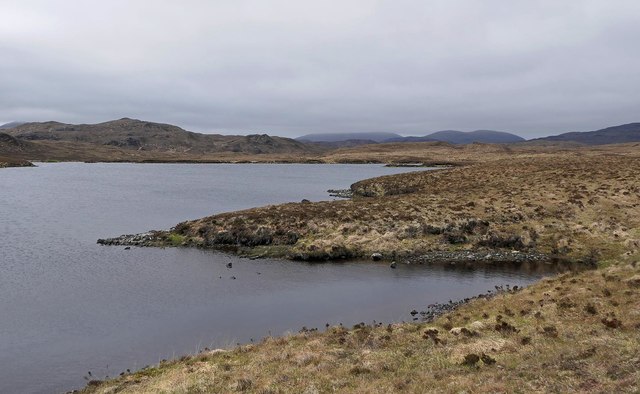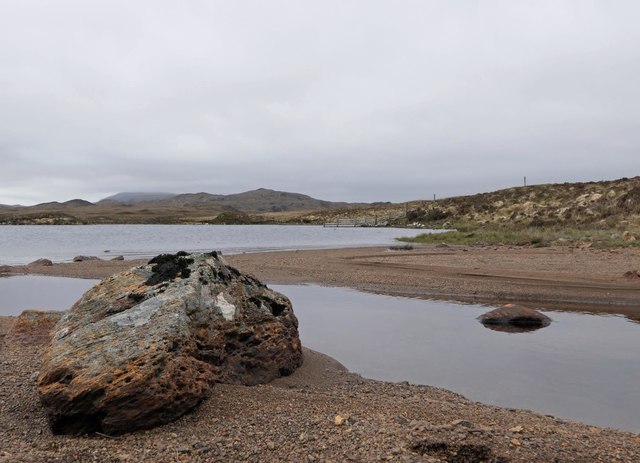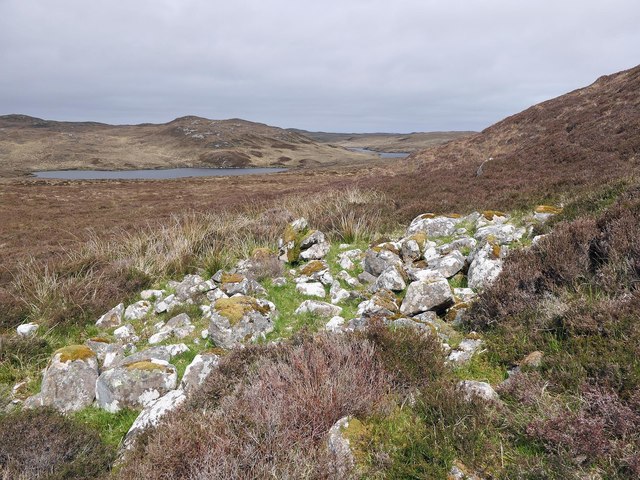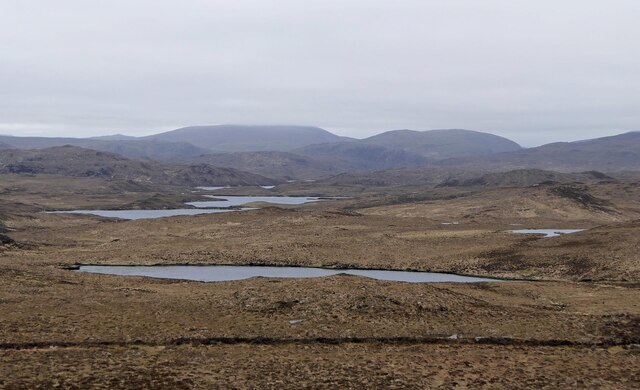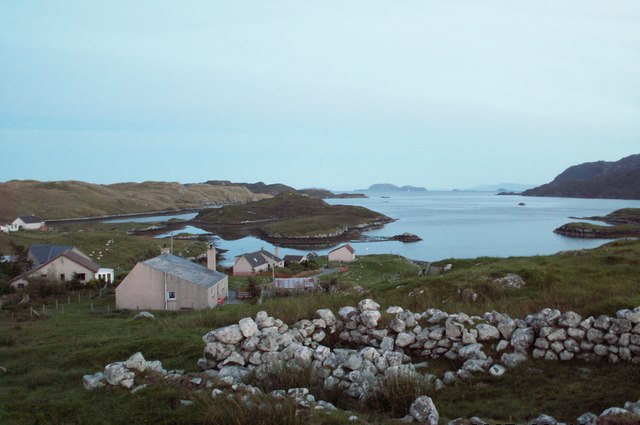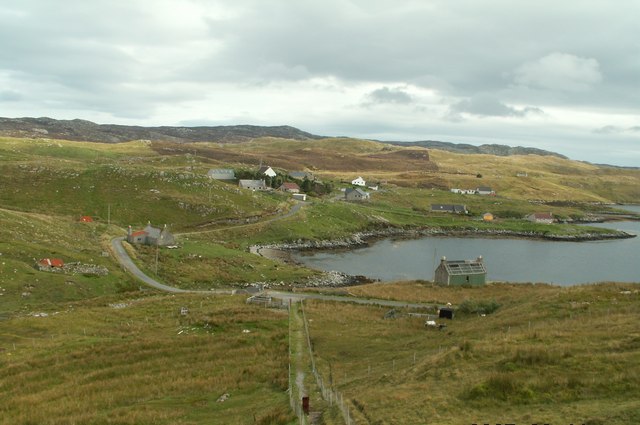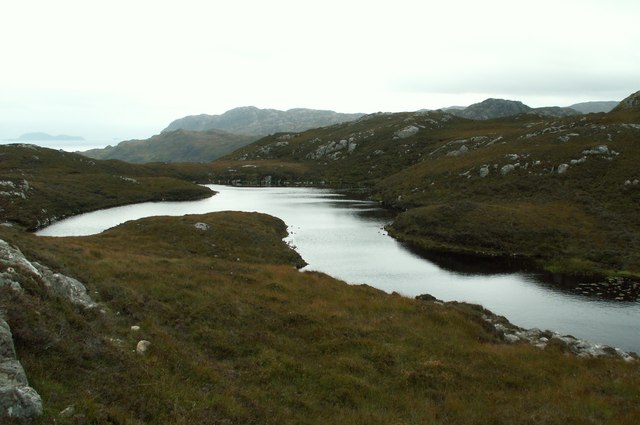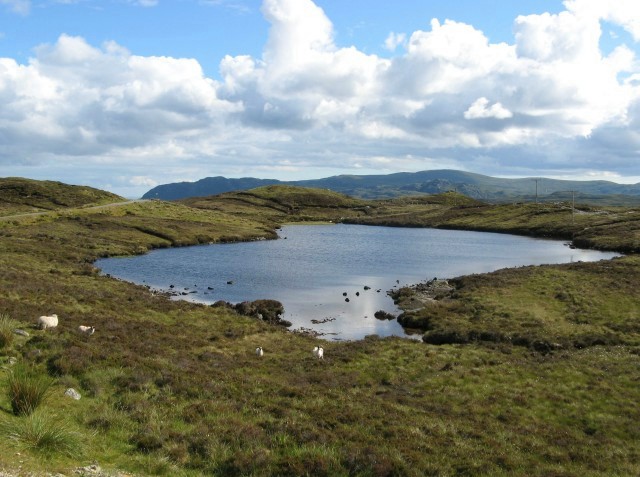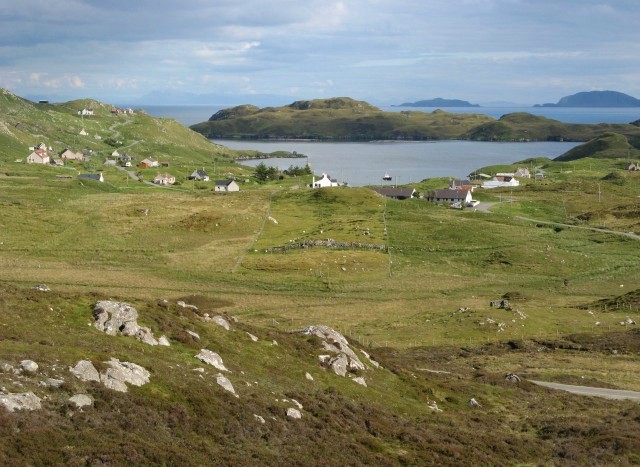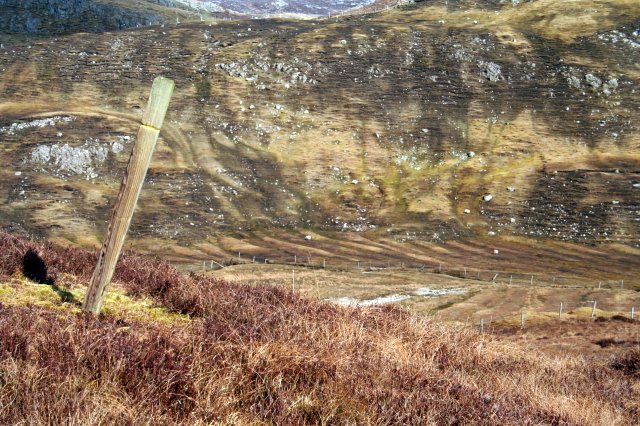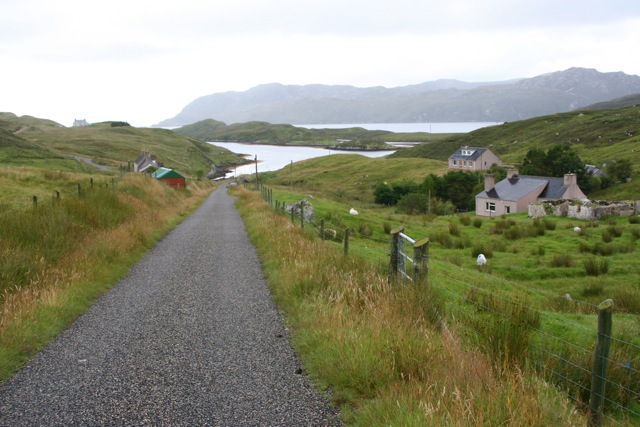Loch nan Gealag
Lake, Pool, Pond, Freshwater Marsh in Ross-shire
Scotland
Loch nan Gealag

Loch nan Gealag is a picturesque freshwater loch located in Ross-shire, Scotland. Situated amidst the breathtaking Highland landscape, it is surrounded by rolling hills, lush greenery, and a diverse array of wildlife.
Covering an area of approximately 10 acres, Loch nan Gealag is not particularly large but offers a serene and tranquil setting for visitors. The loch is characterized by its crystal-clear waters, which reflect the stunning scenery around it, creating a mesmerizing visual spectacle.
The loch is home to a variety of freshwater fish species, including brown trout and perch, making it popular among anglers. Fishing enthusiasts flock to Loch nan Gealag to try their luck and enjoy the peaceful ambiance.
Surrounding the loch, there is a freshwater marsh, which is a haven for numerous bird species. Birdwatchers can spot a wide range of avian inhabitants, including ducks, geese, and even the occasional osprey. The marsh provides a rich feeding ground for these birds, and the surrounding vegetation offers them ample shelter.
The area around Loch nan Gealag is also a haven for nature enthusiasts. The diverse flora and fauna make it a perfect spot for walking, hiking, or simply enjoying the tranquil surroundings. Visitors can take leisurely strolls along the loch's edge, taking in the stunning views and immersing themselves in the serenity of nature.
Overall, Loch nan Gealag is a hidden gem in Ross-shire, offering a unique blend of natural beauty, wildlife, and tranquility. Whether you are an angler, a birdwatcher, or simply seeking a peaceful escape, this loch is sure to captivate and leave a lasting impression.
If you have any feedback on the listing, please let us know in the comments section below.
Loch nan Gealag Images
Images are sourced within 2km of 58.027114/-6.4748964 or Grid Reference NB3512. Thanks to Geograph Open Source API. All images are credited.
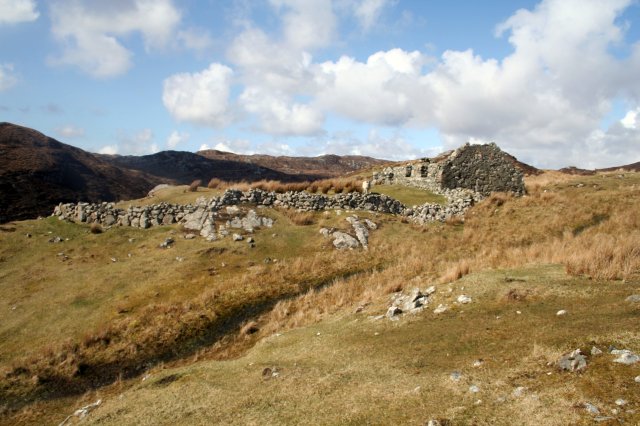
Loch nan Gealag is located at Grid Ref: NB3512 (Lat: 58.027114, Lng: -6.4748964)
Unitary Authority: Na h-Eileanan an Iar
Police Authority: Highlands and Islands
What 3 Words
///shepherdess.flexibly.arena. Near Leurbost, Na h-Eileanan Siar
Nearby Locations
Related Wikis
Orinsay
Orinsay (Scottish Gaelic: Orasaigh) is a crofting village on the Isle of Lewis in the district of Pairc, in the Outer Hebrides, Scotland. The settlement...
Stiomrabhaig
Stiomrabhaig is an abandoned crofter's village on the Isle of Lewis in the Outer Hebrides. == History == The United Kingdom Census 1851 shows that the...
Gravir
Gravir (Scottish Gaelic: Grabhair), is a village on the shore of Loch Odhairn (a sea loch) in the Park district of the Isle of Lewis. Gravir is within...
Eilean Liubhaird
Eilean Liubhaird or Eilean Iubhard is an island in the Outer Hebrides, to the east of Lewis. == Geography and geology == The rock is "gneiss bedrock with...
Have you been to Loch nan Gealag?
Leave your review of Loch nan Gealag below (or comments, questions and feedback).
